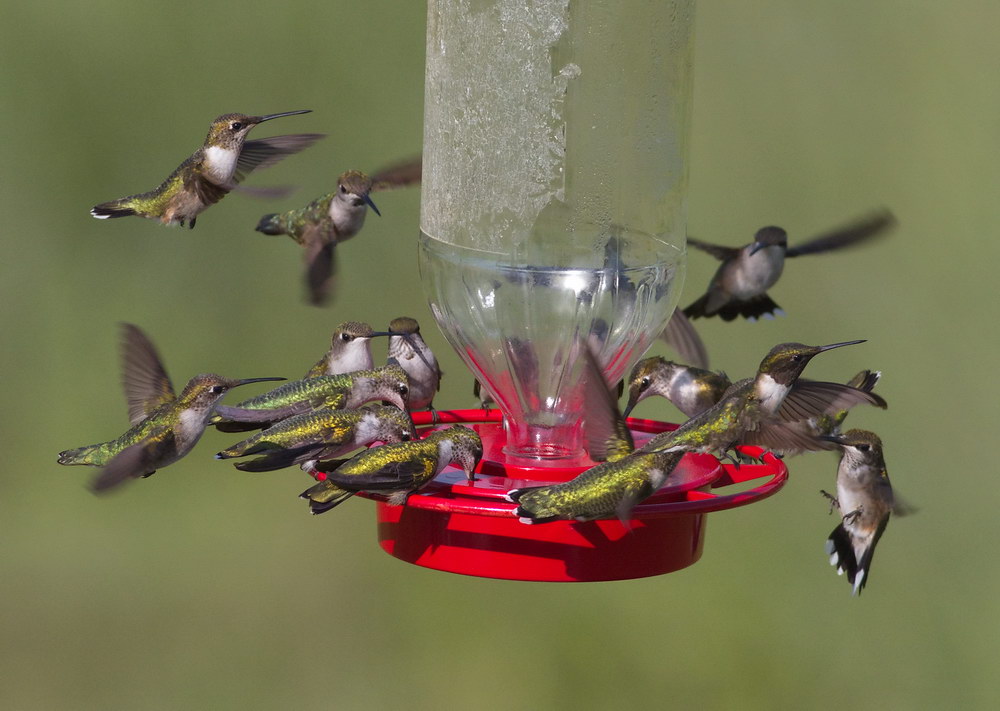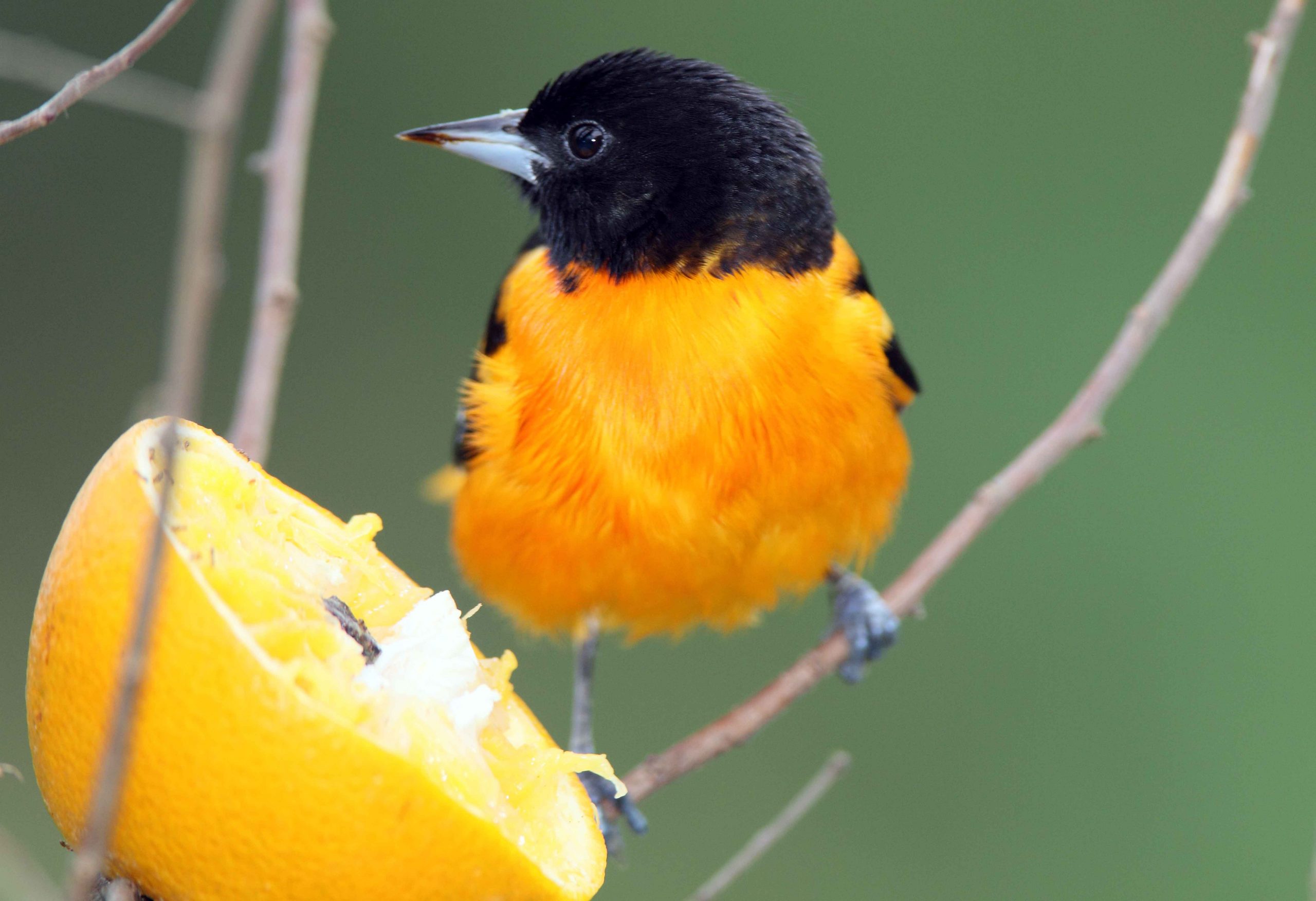
What to Feed the Birds
Seed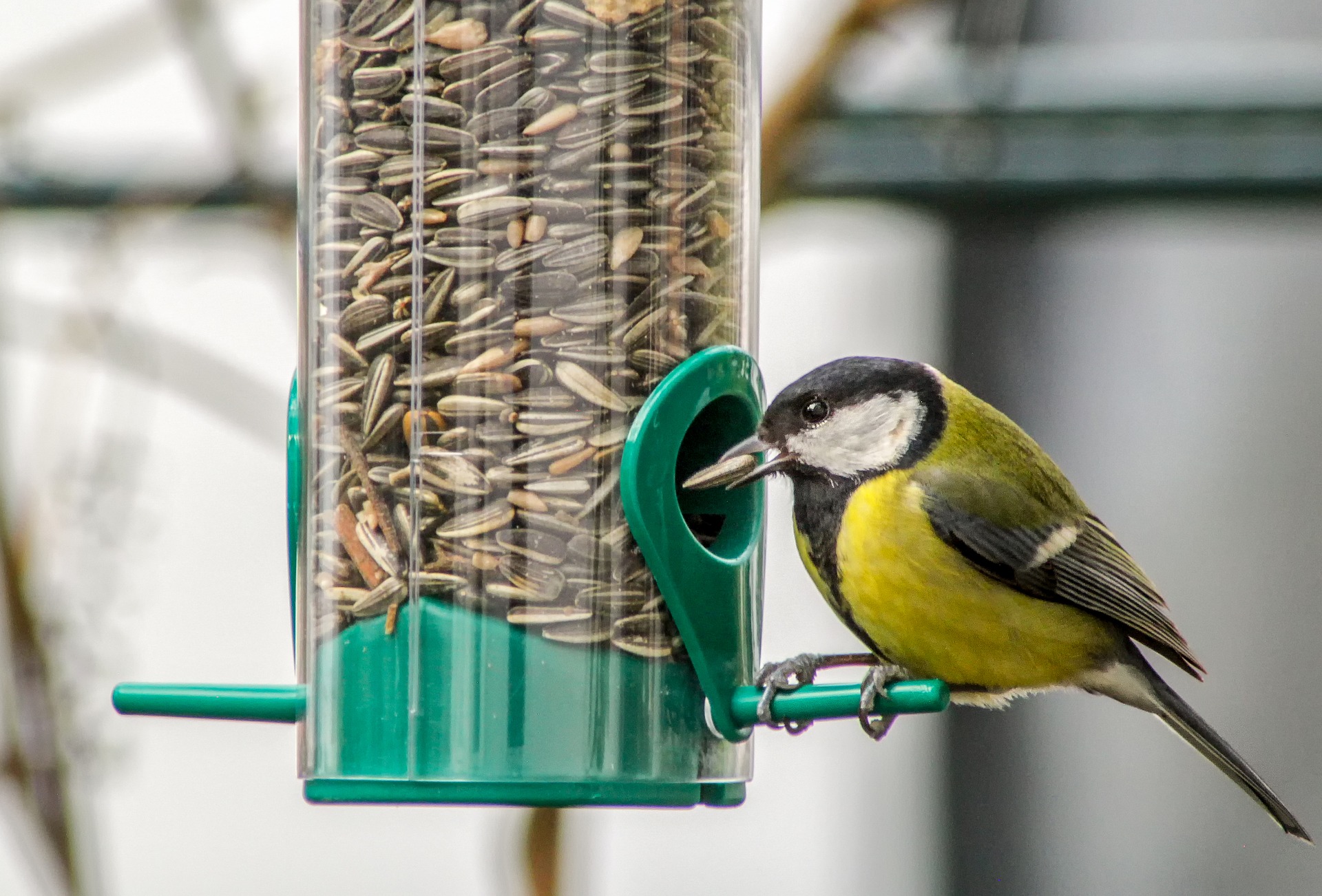
Many North American birds can eat seed and will gladly visit your yard if you put some out for them.
Black oil sunflower seeds are the favorite of many bird species including chickadees, grosbeaks, and cardinals. This is a large, fatty seed that gives the birds the calories they need for their travels. The striped sunflower seeds are also good, but their thick shell makes it harder for the smaller birds to open. Sunflower Hearts are another good option, but they spoil much faster in the humidity.
A favorite of goldfinches and siskins is Niger seed or thistle. You can put this in a mesh bag called a thistle stocking and the birds will cling to the sides as they eat through the mesh. If you have many of these birds visiting your yard, you can trade out the bag for a normal large feeder and mix in some sunflower hearts.
Ground-feeding birds like quails, sparrows, juncos and towhees tend to enjoy white millet along with the black oil sunflower seeds. Safflower, milo, and cracked corn are good options for plenty of birds too.
A chicken scratch mix bought at a feed store is a great mix to be added to 50-50 with black oil sunflower seed. This is what we at GCBO fill most of our feeders with. If you are looking to attract a particular species, you can most likely look up which seeds they prefer.
Most cheap store-bought mixes include filler seeds like golden or red millet, flax, and buckwheat to add to the total weight of the bag. While these are technically edible, most birds don’t really like them and they can spoil fairly easily. More expensive bags tend to have more nutritional and desirable seeds that don’t spoil as easily, so you will ultimately get more bang for your buck. If you ever see seeds that are spoiled or growing mold, be sure to throw them out, as they are not good for the birds.
Suet 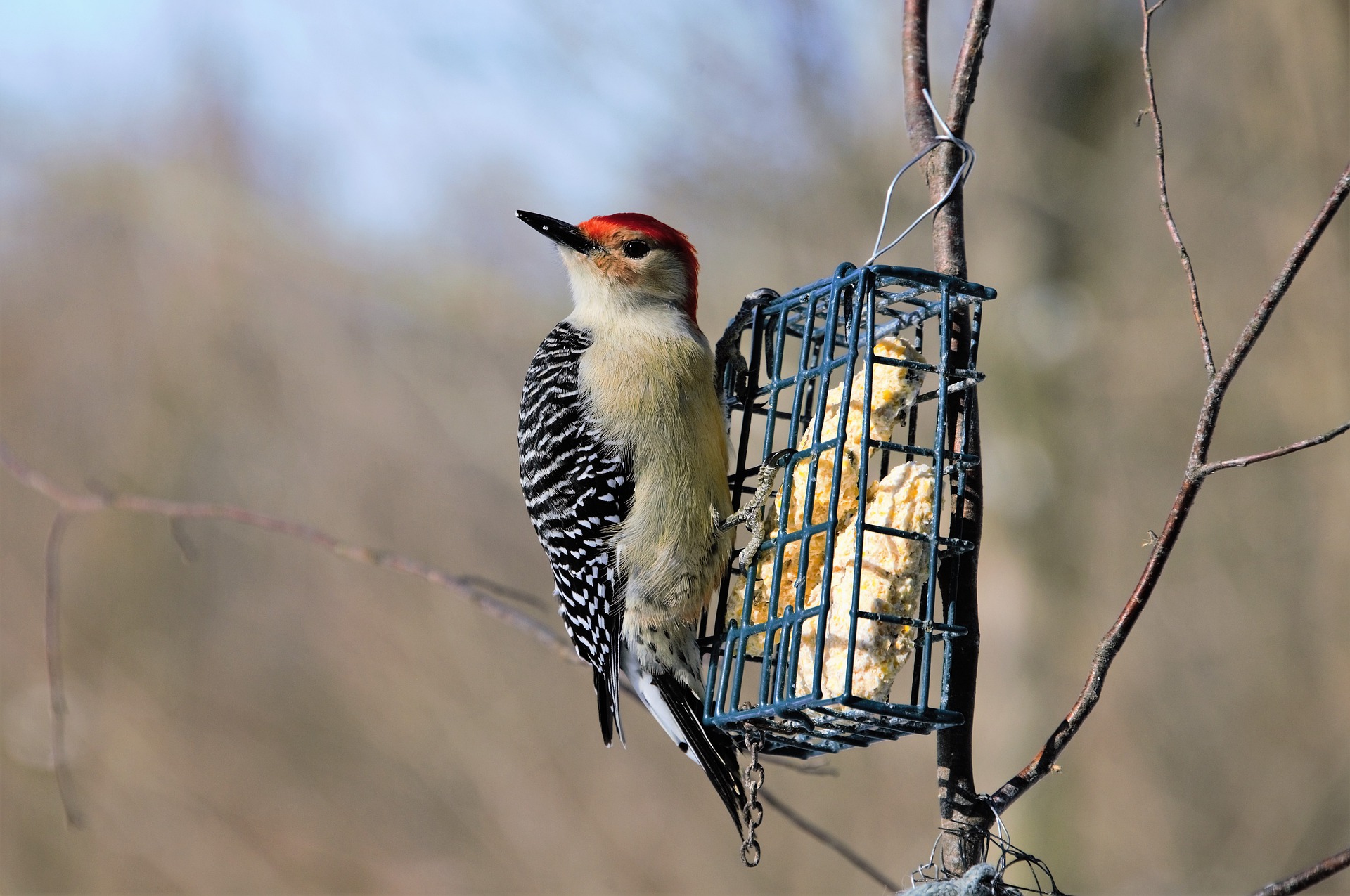
Another high-fat, high-energy snack for backyard birds like woodpeckers, orioles and nuthatches is suet. “Suet” means animal fat, but many bird-friendly suet cakes also contain ingredients like bird seed, sugar, or even peanut butter. It can be bought at the store or prepared at home (be sure to follow a bird-friendly recipe) and hung up in small cages around the yard. Suet is especially appreciated in the winter when there are fewer insects to feed on.
- Tad's Suet Recipe:
2 cups corn meal
2 cups quick oats
1 cup flour
1 cup lard
1 cup peanut butterCombine the lard and peanut butter in a 2 cup (microwavable) measuring cup and microwave for one minute. Then combine all ingredients in a bowl. Once combined, put mix in bread pans or other pan in the shape and size of your suet basket and put in refrigerator for several hours until hardened.
- Denise's Suet Recipe:
2cups of chunky peanut butter
2 cups of lard or can use shortening
4 cups of cornmeal
2 1/2 cups of shelled birdseed
1/2 cup of raisins, currants or cut up dried cherriesMelt peanut butter and lard in a bowl in the microwave for about a minute or so. Mix it together, and it should be kind of soupy. Let cool about 5 minutes. Mix in cornmeal really well. Mix in birdseed and raisins, currants or cherries. Should be the consistency of cookie dough. Put in square Tupperware or some sort of container that's a little smaller than suet feeder. I re-use the plastic suet containers that I get when I buy suet. If using Tupperware or some sort of square container or baking pan, fill about 1 1/2", then cut to fit suet feeder after freezing. If using plastic recycled suet containers fill to top, cover with plastic wrap. Put them in the freezer for about 24 hrs and then move to the refrigerator. You can store them in the refrigerator for up to 2 months. Put out in your suet feeder and the birds will eat it up. Should make about 9 square suet cakes.
Fruit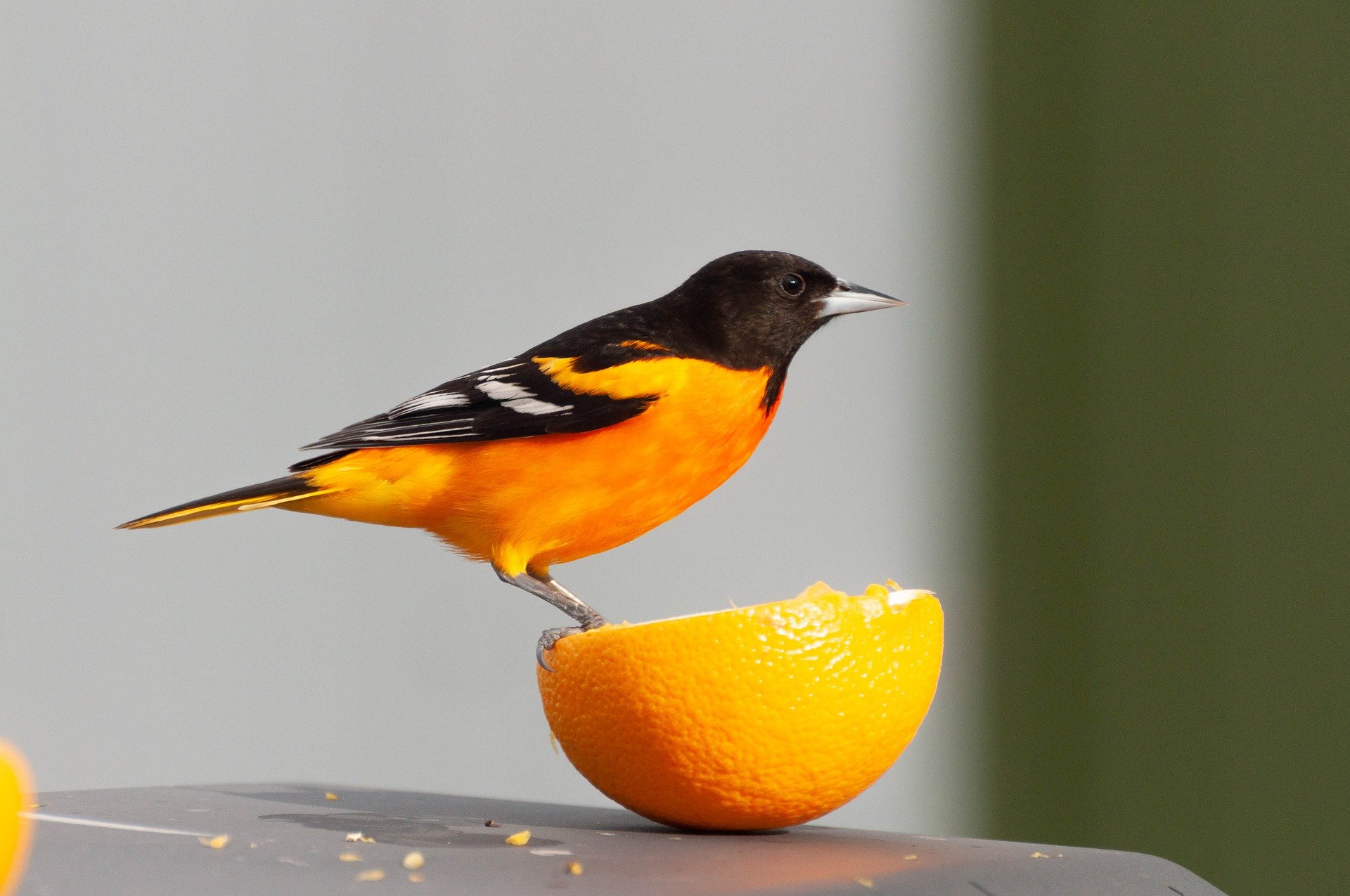
Some birds will never visit a seed feeder because they don’t eat seeds. For these birds, you can put out some fresh fruit or jelly. Oranges, grapes, bananas and other fruits provide the sugar, hydration, and nutrients that certain birds need. Cutting an orange in half, puncturing a hole in the rind, and sticking it on a branch is a great way to feed migrating birds. Orioles, catbirds, and robins like grape jelly in particular. To attract these, put out one spoon-full of jelly in a shallow bowl or plate. Don’t put more than that or bird might become too coated in it to fly.
INSECTS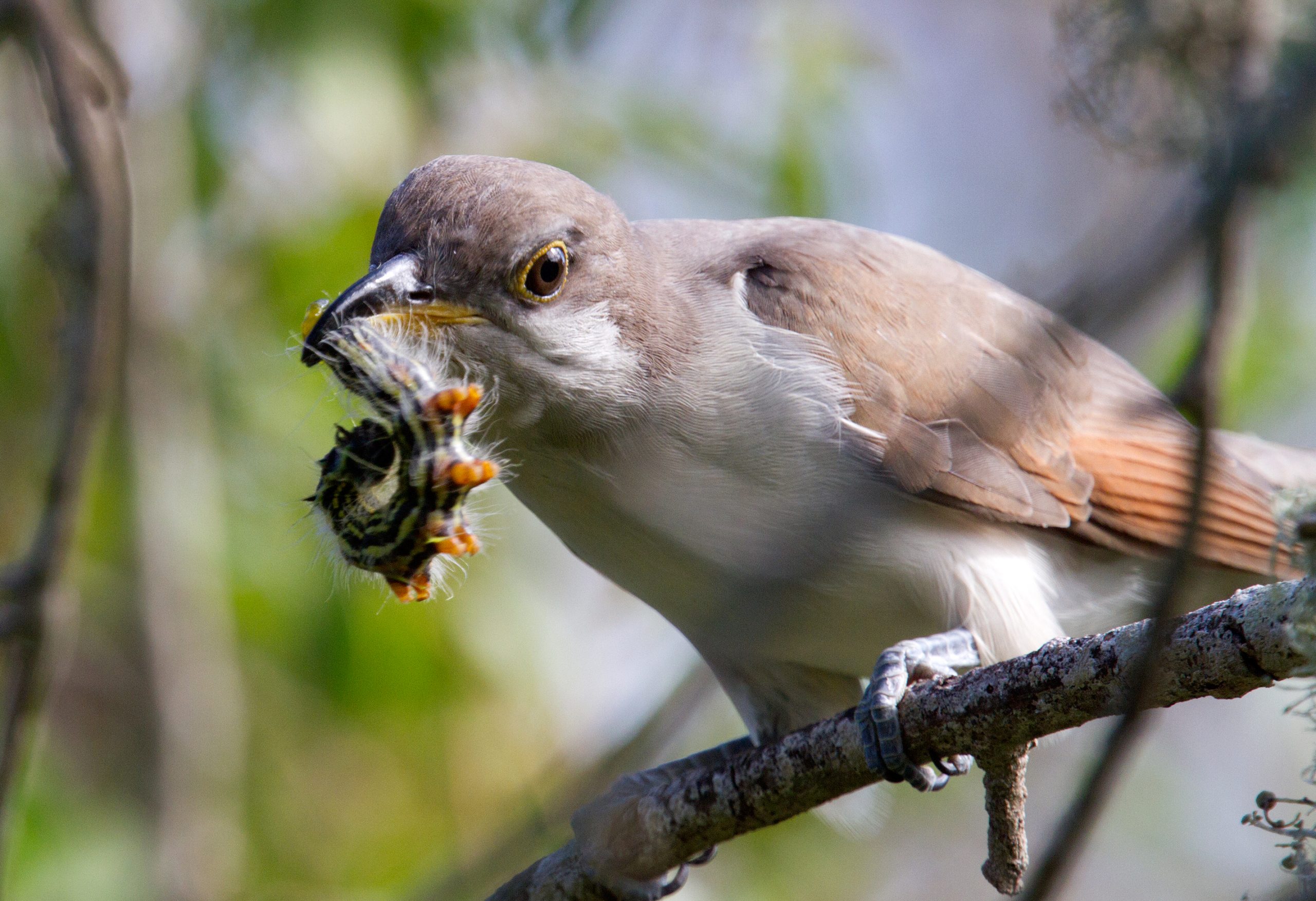
Some birds, especially young ones, need insects more than any other food type. The easiest way to provide insects to birds is to plant native plants. Native plants often play key roles in insect development, allowing them to lay their eggs, develop, and find mates. Non-native plants generally support fewer insect species.
Before buying plants, you can research species that are native to your area on web resources such as Lady Bird Johnson Wildflower Center. Or us NWF's Native Plant Finder to see native plants ranked by the number of butterfly and moth species that use them as host plants for their caterpillars.
You can also provide insects to the birds directly. Bluebirds, vireos, thrushes, and jays for example, can be fed with mealworms. You can get freeze dried mealworms in the store and the birds love them, just sprinkle some on a plate or feeder!
Nectar
Nectar feeders provide both water and sugar to hummingbirds and other small birds such as orioles. Fill the feeders with sugar water made by combining four parts hot water to one part white sugar, boiled for one to two minutes. In the colder months, you can add more sugar to the water to make it a 3/1 solution instead. The birds might be struggling to find flowers!
Never use honey, artificial sweeteners, or red dye. Red dye is potentially harmful for the birds and if you’re feeder is red, then you don’t really need the liquid to be red too. Be sure to change the sugar water regularly before it gets cloudy, or about twice a week in warm weather.
Clean the feeders with dish soap or a solution of one part white vinegar to four parts water about once or twice a week. Mold and bacteria can grow in the feeder and can kill the hummingbirds if they drink it, so cleaning your feeders regularly is important. If your feeder has become dirty, try adding some grains of dry rice to the vinegar solution and shake vigorously. The grains act as a good abrasive, or you can use a good stiff bottle brush. Rinse your feeder well with warm water three times before refilling with sugar solution.
Hang your feeders in the shade to prevent the sugar solution from fermenting. You can also hang several feeders far enough apart that the hummingbirds cannot see one another; this will prevent one bird from dominating the rest when it gets territorial. If that doesn’t help, especially during the busy migration season, try hanging 3-5 feeders very close to each other in a cluster. If enough hummers swarm in, the bully will give up.

